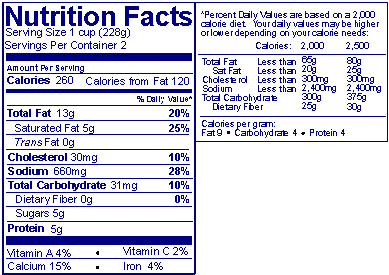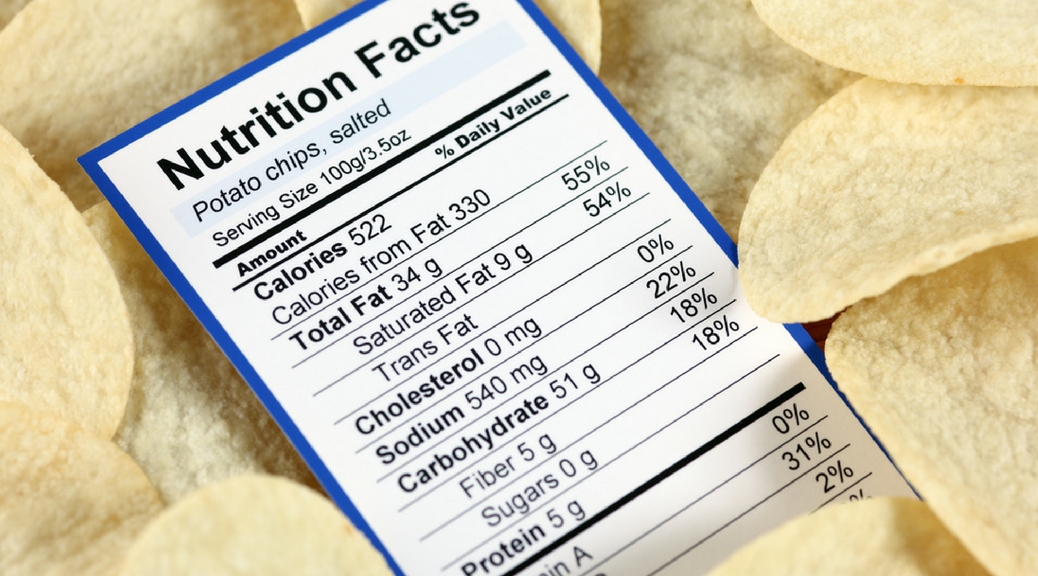If you’ve ever wondered what people are looking at when turning over a can of food to read the label, you’re not alone! Is there some hidden health code that we aren’t aware of? The CGS Team is giving you a quick breakdown of how to read a nutrition label and what to actually keep an eye out for. No longer will you remain in the dark about the mysterious of reading a nutrition label! It can be very confusing in the beginning but after reading a few labels you’ll feel like a professional.

There are various reasons why people read nutrition labels. Some people can only consume a certain amount of calories a day, while others prefer to reduce the amount of sodium in their diet. Whatever is your reason is for understanding a nutrition label, it’s important to know how to read the label in the event you need to know if a product includes something vital to your health. Information regarding amounts posted on the nutrition label can vary by the product. However the serving size, calories, and nutrient information will always be listed, thanks to the Food and Drug Administration.
The Serving Size
The serving size is typically the first place you would want to start when reading the label. The serving size is always located at the top of the label, and it also includes the number of servings in the package, can or box. It’s important to understand the serving size and differentiate it from the servings per container number. The nutrition facts following the top section are listed out per serving, not for the total servings in the container.
If you refer to the image above, you will see that the serving size is 1 cup, however the servings per container is 2 cups. The number of calories per serving is 260, however the total number of calories in the package is 520. You can determine this number by multiplying the calorie count by the total amount in the container. When you’re able to differentiate between serving size and servings per container, you can truly understand the amounts your body is consuming.
Calories
Calories are very important to pay attention to when reading nutrient labels. Calories help give our body’s the energy it needs to sustain and function daily. Generally, Americans consume more calories than they can burn, which leads to weight gain, obesity and other health issues.
The number of servings you consume from the desired product determines the number of calories you actually eat, which is your portion amount. Be mindful of the calorie section because it plays a crucial role in helping you manage your intake. Here’s a cheat sheet to calorie consumption, based on the standard 2000 daily caloric consumption average:
40 Calories is low
100 Calories is moderate
400 Calories or more is high
Nutrients
Nutrients are important to know because they impact your health in a positive (or negative) way. When you are putting the right things in your body, wonderful things can happen. On the contrary, when you put bad things in your body, it doesn’t function as well as it could. Eating foods with high amounts of fat, saturated fat, trans fat, cholesterol, carbohydrates, sugar, or sodium can increase your risk of certain chronic diseases, weight gain, and other inflammatory issues.
Try to going with foods that include high amounts of fiber, as well as items below the line, which can include: vitamin A, vitamin C, calcium, and iron. Eating enough of these nutrients can improve your health and keep your body functioning at its peak.
The % Daily Value
This value is solely based on the recommendations for key nutrients for a 2,000 calorie diet. The %DV helps you determine if a serving of food is high or low in nutrients. Everything is already calculated on the label for you. Each nutrient is based on 100% of the daily requirements for that nutrient in a 2,000 calorie diet.
It makes it simple for the consumer to know how much of each product they need to intake to reach their diet. It’s important to note that a 2,000 calorie diet may be quite high for a petite woman. Reach out to your doctor or health expert to get the best daily caloric intake for your body.
Related: 6 Drinks That Will Ruin Your Figure
Now when you’re in your favorite super market you too can read nutrition labels and understand exactly what it’s saying! Understanding what we are putting into our bodies will help us take care of them for the long haul. How did you learn to understand a nutrition label? Do you know what intake limits your body needs to function appropriately? Share your tidbits with the community by leaving a comment below!





